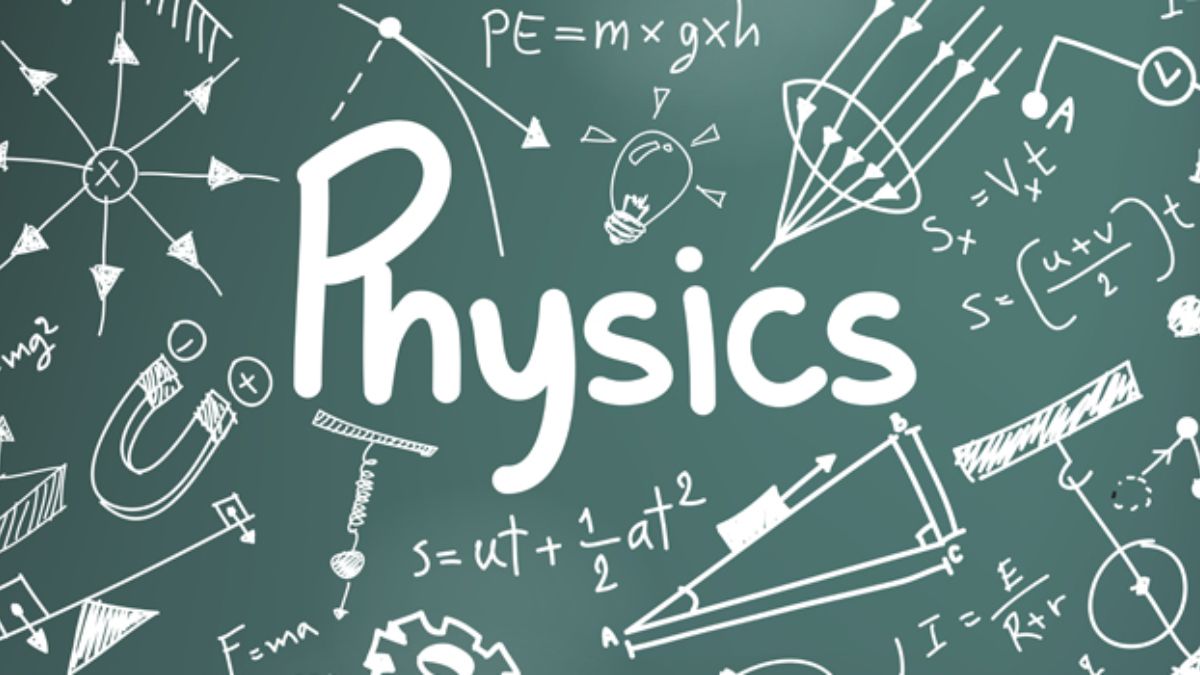The National Eligibility cum Entrance Test is a national level entrance examination conducted every year by the National Testing Agency to recruit students for admission into various medical courses like MBBS and BDS. Physics is one of the major subjects that aspirants need to study and prepare for the NEET Exam 2026.
One of the crucial topics in the NEET Physics section is Physics and Measurement, which forms the foundation for various concepts across the subject. To support students master this chapter, we have shared NEET Physics MCQs (Multiple Choice Questions) based on the Physics and Measurement chapter, helping candidates assess their knowledge and refine their exam preparation.
NEET Physics MCQs for Physics and Measurement Chapter
The National Testing Agency is the conducting body for the NEET Exam. All the aspirants for this exam need to complete their preparations for the exam by studying all the topics mentioned in the NEET Syllabus 2026. The NEET Physics Syllabus 2026 mentions the Physics and Measurement Chapter as one of the most important chapters, which deals with the study related to physical quantities, their measurement, and standardization through units and systems like the International System of Units (SI).
Importance of Physics and Measurement in NEET
The Physics and Measurement chapter lays the groundwork for understanding the fundamental principles of Physics. Topics such as units, dimensional analysis, error analysis, and measurement techniques are essential for solving problems in multiple branches of Physics, including Mechanics, Thermodynamics, and Electromagnetism.
For NEET aspirants, a firm grasp of this chapter is crucial because:
- It introduces key concepts like measurement accuracy, units of physical quantities, and error analysis.
- It reinforces understanding of the SI system and dimensional analysis, vital for the understanding of complex Physics problems.
- It ensures familiarity with standard units, significant figures, and scientific notation, essential for accurate problem-solving.
Let’s dive into a collection of NEET-style MCQs based on the chapter Physics and Measurement to help students test their knowledge and sharpen their skills.
Key Topics Covered in Physics and Measurement
Before we move on to the MCQs, it’s important to understand the critical subtopics that are frequently tested in NEET exams:
- Units and Dimensions: Understanding SI units, derived units, and dimensional formulae.
- Accuracy and Precision: Concepts like systematic errors, random errors, and measurement uncertainty.
- Significant Figures: Determining the correct number of significant figures in measurements.
- Errors and Estimation: Understanding the different types of errors in measurements and how to minimize them.
- Dimensional Analysis: Using dimensional formulae to check the consistency of physical equations.
Units and Measurement for NEET with Answers
In the article below, we have shared some of the most important NEET Physics MCQs for Physics and Measurement Chapter so that all the students who are preparing for the NEET Exam can start preparing for the exam using them. Check the multiple choice questions here:
1. The magnitude of any physical quantity:
- Depends on the method of measurement
- Does not depend on the method of measurement
- Is more in S.I. system than in CGS system
- Directly proportional to the fundamental units of mass, length, and time
Answer: 1
2. What is the unit of measurement of solid angle?
- Steradian
- Degrees
- Radians
- Grades
Answer: 1
3. Newton-second is the unit of
- Velocity
- Angular Momentum
- Momentum
- Energy
Answer: 3
4. Which of the following is not the unit of energy?
- Calorie
- Joule
- Electron volt
- Watt
Answer: 4
5. Candela is the unit of:
- Electric intensity
- Luminous intensity
- Sound intensity
- None of these
Answer: 2
6. Universal time is based on:
- Rotation of the earth on its axis
- Earth’s orbital motion around the earth
- Vibrations of cesium atom
- Oscillations of quartz crystal
Answer: 3
7. Which of the following quantities has the same dimensions as that of energy?
- Power
- Force
- Momentum
- Torque
Answer: 4
8. Which of the following pairs does not have similar dimensions?
- Stress and Pressure
- Tension and Surface Tension
- Planck’s Constant and Angular Momentum
- Angle and Strain
Answer: 2
9. Which pair has the same dimensions?
- Work and Power
- Density and Relative Density
- Momentum and Impulse
- Stress and Strain
Answer: 3
10. A unitless quantity:
- May have a non-zero dimension
- Always has a non-zero dimension
- Never has a non-zero dimension
- Does not exist
Answer: 3
11. The ratio of the dimensions of Planck’s constant and that of moment of inertia has the dimensions of:
- Frequency
- Velocity
- Time
- Angular momentum
Answer: 1
12. The dimension of Planck’s constant equals to that of:
- Energy
- Momentum
- Angular momentum
- Power
Answer: 3
13. The physical quantities not having same dimensions are:
- Pressure and Bulk modulus
- Torque and work
- Momentum and Planck’s constant
- Stress and Young’s modulus
Answer: 3
14. In the C.G.S. system the magnitude of the force is 100 dyne. In another system where the fundamental physical quantities are kilogram, metre, and minute, the magnitude of the force is:
- 0.036
- 0.36
- 3.6
- 36
Answer: 3
15. If a unit of length is 4m, the unit of mass is 4 kg and the unit of time is 2s, then 32 units of energy in this new system of unit.
Answer: 1/16
16. Assertion (1): The method of dimensional analysis cannot validate the exact relationship between physical quantities in any equations.
Reason (R): It does not distinguish between the physical quantities having same dimensions.
- Assertion (1) is true, Reason (R) is true; Reason ® is a correct explanation for Assertion (1).
- Assertion (1) is true, Reason (R) is true; Reason ® is not a correct explanation for Assertion (1).
- Assertion (1) is true, Reason (R) is false.
- Assertion (1) is false, Reason (R) is true.
Answer: 1
17. If L = 2.331 cm, B = 2.1 cm, then L + B =?
- 4.431 cm
- 4.43 cm
- 4.4 cm
- 4 cm
Answer: 3
18. Taking into account of the significant figures, what is the value of 9.99 m − 0.0099 m? (2020)
- 9.98 m
- 9.980 m
- 9.9 m
- 9.9801 m
Answer: 3
19. If 97.52 is divided by 2.54, the correct result in terms of significant figures is:
- 38.4
- 358.3937
- 38.394
- 38.39
Answer: 1
20. A silver wire has mass (0.6 ± 0.006)g, radius (0.5 ± 0.005) mm and length (4 ± 0.04)cm. The maximum percentage error in the measurement of its density will be:
- 4%
- 3%
- 6%
- 7%
Answer: 1
Year Wise NEET Physics MCQs for Physics and Measurement Chapter
In the table listed below, we have added the year wise NEET Physics MCQs for Physics and Measurement Chapter so that all the students can start preparing accordingly. Click on the links below:
| Year Wise NEET Physics MCQs for Physics and Measurement Chapter | |
| Year | Links |
| 2014 | Click Here |
| 2015 | Click Here |
| 2016 | Click Here |
| 2017 | Click Here |
| 2018 | Click Here |
| NEET Physics Chapters | MCQ Link |
|---|---|
| Physics and Measurement | Click Here |
| Kinematics | Click Here |
| Laws of Motion | Click Here |
| Work, Energy, and Power | Click Here |
| Rotational Motion | Click Here |
| Gravitation | Click Here |
| Properties of Solids and Liquids | Click Here |
| Thermodynamics | Click Here |
| Kinetic Theory of Gases | Click Here |
| Oscillation and Waves | Click Here |
| Electrostatics | Click Here |
| Current Electricity | Click Here |
| Magnetic Effects of Current and Magnetism | Click Here |
| Electromagnetic Induction and Alternating Currents | Click Here |










 NEET Preparation Strategy 2026: Detailed...
NEET Preparation Strategy 2026: Detailed...
 Free NEET Sample Papers 2026 PDF | Downl...
Free NEET Sample Papers 2026 PDF | Downl...
 Salt Analysis NEET Notes, Check Importan...
Salt Analysis NEET Notes, Check Importan...








